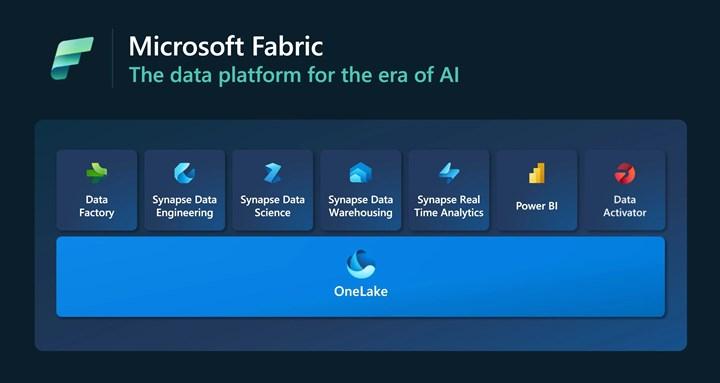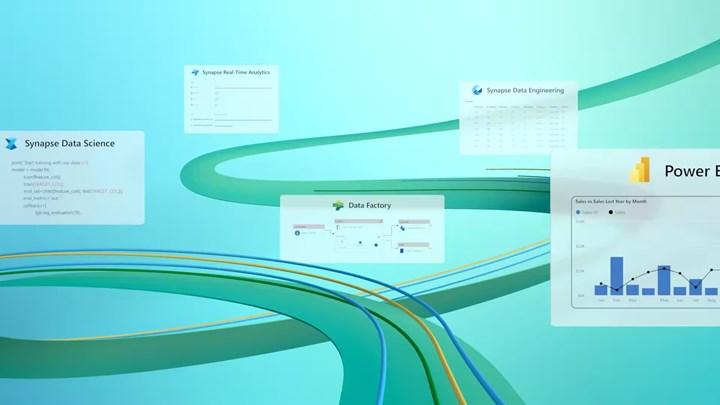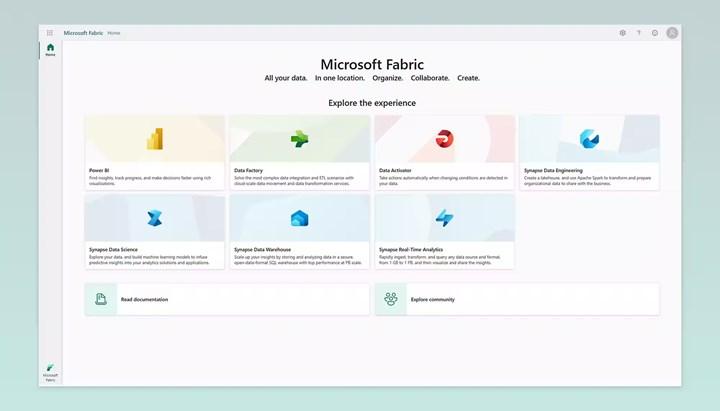 After its $13 billion investment in OpenAI and bringing AI technology to the Bing search engine and other products such as email, Word, Excel, and Windows 11, Microsoft has launched a chatbot – or Copilot – that will allow users to make sense of information stored in corporate databases. – makes available.
After its $13 billion investment in OpenAI and bringing AI technology to the Bing search engine and other products such as email, Word, Excel, and Windows 11, Microsoft has launched a chatbot – or Copilot – that will allow users to make sense of information stored in corporate databases. – makes available.Beyond the chatbot, Microsoft has created a new platform called Fabric that will bring seven data products under one umbrella. In fact, the firm’s move is similar to the launch of the Office productivity software suite in 1990, and Microsoft is highlighting cost-saving opportunities at a time when customers are tightening their belts.
Microsoft Fabric unifies everything in data analytics
 The software giant is launching its end-to-end data and analytics platform, Microsoft Fabric (not to be confused with Azure Service Fabric), while the new platform centers on the firm’s OneLake data lake. But it will also pull data from Amazon S3 and (soon) Google Cloud Platform and will include everything from integration tools to a Spark-based data engineering platform, a real-time analytics platform, and an easy-to-use visualization and AI-based analytics tool with newly developed Power BI. . All these tools are pretty tightly integrated and of course Microsoft will integrate AI Copilot into Fabric as well.
The software giant is launching its end-to-end data and analytics platform, Microsoft Fabric (not to be confused with Azure Service Fabric), while the new platform centers on the firm’s OneLake data lake. But it will also pull data from Amazon S3 and (soon) Google Cloud Platform and will include everything from integration tools to a Spark-based data engineering platform, a real-time analytics platform, and an easy-to-use visualization and AI-based analytics tool with newly developed Power BI. . All these tools are pretty tightly integrated and of course Microsoft will integrate AI Copilot into Fabric as well.Arun Ulag, Microsoft’s corporate vice president of Azure Data, said: “There has been a tremendous level of innovation over the last five to 10 years, but it has also resulted in a lot of fragmentation of the modern data stack. There are hundreds, even thousands, of which customers need to make sense of. product, open source technology and solution.” said.
Giants already love Microsoft Fabric
 Ulag said he personally introduced Fabric to 100 of the Fortune 500 over the past year, and many organizations are excited about it because it greatly simplifies their data infrastructure without locking them into a single cloud provider. This is partly because the team decided to build the central data lake around the open source Apache Parquet format, which is a column-oriented file format for data storage and retrieval. Microsoft has also decided to build Fabric around a multicloud approach, with built-in support for data in Amazon S3 and Google Storage (coming soon), which is a pretty significant move.
Ulag said he personally introduced Fabric to 100 of the Fortune 500 over the past year, and many organizations are excited about it because it greatly simplifies their data infrastructure without locking them into a single cloud provider. This is partly because the team decided to build the central data lake around the open source Apache Parquet format, which is a column-oriented file format for data storage and retrieval. Microsoft has also decided to build Fabric around a multicloud approach, with built-in support for data in Amazon S3 and Google Storage (coming soon), which is a pretty significant move.As it is known, huge companies work with tens or even hundreds of suppliers. Most businesses today combine their data and analytics systems with the help of multiple vendors. However, each brick means extra cost. Fabric, on the other hand, discards unnecessary elements in processes as it creates a unified computing model.
Fabric can be tried for free
Another advantage, according to Microsoft, is that data access and management (using Microsoft Purview) is easier thanks to this single unified system. For example, if an employee with the right access rights wants to analyze highly confidential employee salary data and export it to Excel or Power BI, the service will ensure that documents created with that data inherit the same privacy label and associated rules (and based on these rules , will automatically encrypt these files so no one can access them even if they leak outside the company).
Of course, Microsoft Fabric has an artificial intelligence Copilot that will make it easy for users to create data pipelines, generate code, build machine learning models, and more. Fabric is currently in public preview. In a somewhat unusual move by Microsoft’s standards, anyone can try the service without even having to provide their credit card information. Fabric will be enabled for all Power BI users starting July 1.